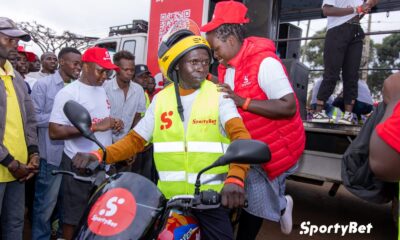When Kenya confirmed its first case of Covid-19 on March 24, the government set out to stop the virus with this strategy — test, trace, and isolate people who had contracted the disease.
The target was to test and find infected people, isolate and treat them, as their close contacts were traced and put under watch in quarantine.
Already in use in other countries, it seemed to be a simple and obvious strategy, and Health Cabinet Secretary Mutahi Kagwe was sure of giving the virus that is now running wild a knock-out.
But four months later, the country seems to have lost the plot, with some of the measures being abandoned as infections continue to soar.
POLITICAL ANNOUNCEMENTS
A spot-check by the Nation reveals that political announcements and the reality on the ground parted ways, with patchwork and appendages now underway on the initial strategy. A close look at happenings on the ground reveals that the ball might have dropped in some key areas of the plan, including:
– Testing: From the beginning, the country had a monumental problem with testing — managing a dismal 50 tests per every positive case in May as South Africa, Uganda and Rwanda did 200,000, 333 and 100 respectively.
In the early months after the outbreak, testing posed a significant problem as supplies fell far short while the State agencies charged with the mandate — the National Influenza Centre and the Kenya Medical Research Institute — engaged in turf wars.
Things have improved in the recent weeks, and so far 207,897 suspected cases have been tested and 9,726 found positive. While this appears to be a big number, it falls short of the government’s target to test 250,000 people by the end of June. And, as the cases continue to rise, demand for testing has soared, surpassing capacity and creating a new crisis.
Targeted mass testing that had been launched in virus hotspots — Old Town in Mombasa, and Kawangware and Eastleigh in Nairobi — has since stopped.
The Kenya Medical Association Vice-President, Prof Lukoye Atwoli, said the country’s capacity to test has not increased as anticipated and so many people could have the virus and are not aware of it. Consequently, he said, asymptomatic patients are likely to continue spreading the virus unknowingly with the recent relaxation of containment rules.
MORE TESTING
“I believe we still need to do more testing to detect the actual number of people who have the virus in the community,” Prof Atwoli told the Nation, adding, “the inability to find out the actual situation on the ground is a major setback.”
Dr Andrew Suleh, a consultant physician, renal, and tropical medicine specialist said a combination of factors fuelled the problem: shortage of testing kits and materials, backlogs at laboratories that process the tests, and a surge in cases that have so far spread to 41 counties. Government reliance on donated kits, he said, has been detrimental to the testing component of the strategy.
“Our testing strategy has not been well-coordinated and while it was crucial to implement wide-scale testing from the beginning, the government failed from the get set-go,” he said.
“It might be expensive to test randomly and so the government should have considered testing high density and traffic areas.”
– Contact tracing: When the first case was reported, the government swung into action and traced all those who had come into contact with the patient, who had travelled back to Kenya from the United States via London
They were all isolated and tested and those who were confirmed to be positive were admitted to various health facilities.
AVOID QUARANTINE
This continued well until the cases crossed the 2,000 mark and things became thick, with Mr Kagwe revealing that some suspected patients were even giving false phone numbers to avoid quarantine.
The ministry’s latest situation report notes little contact tracing is ongoing amid community infections. Only eight out of 47 counties –17 per cent — are submitting reports. The report shows that 28 counties with active cases did not submit their updates on contact tracing, meaning, no one is monitoring the virus surge in villages and small towns.
Dr Majid Twahir, the associate dean for clinical affairs and chief of staff at Aga Khan University Hospital, said that this strategy was working in the initial stages because there were few chains of transmission. He added that it was easy for the government to trace contacts when the number of infections was low and within Nairobi.
However, as the cases kept rising and spreading to almost all counties, especially in the rural areas, it became hard to do effective contact tracing.
“The government has done a great job, but it has not been easy to trace all contacts because the numbers are high and continue to rise daily,” he said.
He proposed that the government consider getting more community health volunteers to do this, moving forward, “because this will ensure reduction in transmission, which will allow the reopening of economic activities while attaining a manageable impact on the health care system.”
Professor Atwoli said tracing of people who have interacted with Covid-19 patients may have failed because it requires a significant resource outlay.
Thousands of people, for instance, are required to interview patients, and identify everyone they may have come into contact with, before emergency teams can track them down.
“We’ve seen countries that have introduced contact tracing apps that track the location or identify contacts to automatically gather this data and inform people if they need to self-isolate,” he said.
“Kenya, however, depended on the same team that traced a few hundred people to trace contacts even as the number of cases increased.”
Dr Francis Kuria, an incident commander, Contact Tracing and Data Management, says human resources is a big challenge.
“We only have four employees, while the remaining 28 are volunteers. Management of volunteers is not an easy task; they’re not motivated all the time, and this hampers the work,” he said.
With the increase in the numbers, he argued, it will not be possible to trace everyone. He thus asked Kenyans to be more vigilant and take personal responsibility to ensure they are not infected. The process, Dr Kuria said, is also expensive.
Tracing and calling one person costs Sh50 and on average one person has about 15 contacts and millions of people are being traced.
“You cannot trace everyone,” he noted.
As of last week, the department was tracing about 10,000 contacts and many have been missed out, which has consequences.
When a contact is missed, a track is lost.
– Isolation
Isolation and quarantine were aimed at preventing exposure to people who had or were suspected to have Covid-19.
The Health ministry started with the Kenyatta National Hospital as an isolation unit for patients while the Kenya Medical Practitioners and Dentists Union identified slightly over 100 hotels and institutions of higher learning to be used as quarantine centres.
The centres were first used to isolate those who had arrived from abroad, but this changed after community transmissions were reported. More centres were set up in various facilities across the country.

Sign up for free AllAfrica Newsletters
Get the latest in African news delivered straight to your inbox
Success!
Almost finished…
We need to confirm your email address.
To complete the process, please follow the instructions in the email we just sent you.
Error!
There was a problem processing your submission. Please try again later.
FREE CERTIFICATES
A spot check in various quarantine facilities has revealed that a majority of people in those sites are those who have travelled from abroad without Covid-19 free certificates or those who had not applied for home quarantine prior to their travel.
The institutions that had a majority of the people in quarantine are the government facilities, which are free as opposed to hotels, which charge between Sh5,000 to Sh10,000 a night.
– Shift to counties: As the numbers continued to rise, the government announced yet another pillar to its strategy — setting up 300-bed capacity isolation units in all the 47 counties. According to a report from the ministry, however, only 23 counties had met the target ahead of the July 7 deadline.
Cumulatively, counties had attained a total of 9,300 isolation beds against the national target of 30,500 units. Currently, Kenya has only 537 ICU beds and 256 ventilators and this at a time a team of researchers from Kemri have released a report estimating that Kenya urgently needs an additional 1,511 ICU beds and 1,609 ventilators to take care for a possible one million Covid-19 cases.
Dr Chibanzi Mwachonda, the secretary-general of the Kenya Medical Practitioners, Pharmacists and Dentists Union, said the shortage of health workers was likely to work against Mr Kagwe’s strategy. “The fight over who will employ workers between the national and county government is also worrying and so health workers are starting to get burn out,” he said.
Reached for a comment Mr Kagwe said the country is on the right track. “We’re very much on course but shouldn’t you be focusing on the shift to personal responsibility… not everything government is negative. What would make you think we lost the plot when all over the world we are getting kudos?” he asked.

 General News2 days ago
General News2 days ago
 Business News1 week ago
Business News1 week ago
 Entertainment6 days ago
Entertainment6 days ago
 General News2 days ago
General News2 days ago






